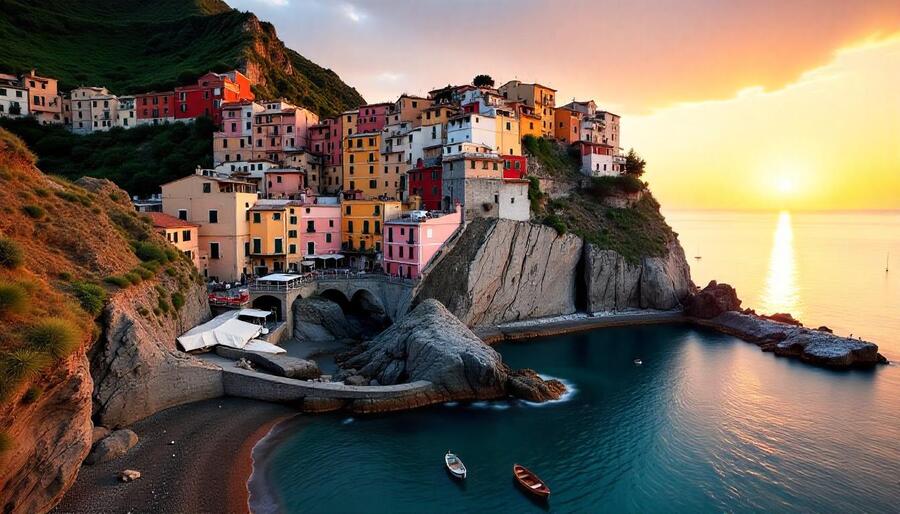≡-France, Spain, Italy, And UK at The Heart of Europe’s Tourism Turmoil as Extreme Heatwaves, Mass Flight Cancellations, and Over tourism Disrupt Summer Travel This Year – Viral of Today
<> Viral of Today <>
Home » EUROPE » France, Spain, Italy, And UK at The Heart of Europe’s Tourism Turmoil as Extreme Heatwaves, Mass Flight Cancellations, and Over tourism Disrupt Summer Travel This Year Thursday, July 3, 2025France, Italy, UK and Spain are confronted with an unprecedented travel disruption convergence this summer that places them at the eye of the storm that is running through Europe’s tourism. A deadly mixture of record-busting heatwaves, mass flight cancellations, and swelling over tourism pressures have turned the peak holiday period into a logistical nightmare and an ecological disaster. Record-breaking hot weather—fuelled by heatwaves at sea and Sahara winds—have ripped historic temperature records while air traffic strikes and mechanical faults have resulted in thousands of delays and cancellations at major airports. Even as swelling numbers of tourists are overwhelming infrastructure and stoking protests at tourist-thronged cities, this European summer travel season is shaping up to be one of the most chaotic in recent history.The summer of 2025 has turned into a nightmare for travelers across Europe, with extreme heatwaves and widespread flight disruptions creating unprecedented chaos across popular tourist destinations in France, Spain, Italy, and the UK. From cancelled flights and scorching temperatures to public protests over overtourism, the traditional European vacation season has been marred by infrastructure breakdowns and environmental pressures, casting a shadow over what should have been a season of carefree exploration.Introduction (One or Two Lines)Europe’s summer travel season is facing massive disruptions as heatwaves and air traffic strikes wreak havoc on transportation systems and tourist experiences across the continent. Popular destinations like France, Spain, and Italy are struggling to cope with cancelled flights, unbearable temperatures, and the mounting impacts of over tourism.Air Traffic Strikes and Flight Cancellations Disrupt Travel Across EuropeThousands of travelers have had their plans thrown into disarray as a wave of air traffic strikes and operational challenges cascades across Europe. Beginning July 1, 2025, airports throughout the region experienced a surge in delays and cancellations, forcing many airlines to ground flights or reroute schedules at short notice.The hardest-hit locations include France, where widespread air traffic control strikes have paralyzed operations at major hubs such as Paris Charles de Gaulle and Orly Airport. According to aviation analytics, over two hundred flights were delayed and more than sixty were cancelled on a single day, as airlines scrambled to adjust operations amid staff shortages, technical issues, and severe weather conditions.Airlines affected include global carriers like Air France, Finnair, American Airlines, Emirates, KLM, Air Canada, and China Southern. Many of these airlines were forced to reduce service or cancel flights altogether as their operations buckled under logistical strain. On July 2, Finnair was forced to withdraw one hundred short-haul European services, citing personnel shortages and widespread operational bottlenecks across its network.The disruption followed another travel crisis just days earlier. On June 28, a critical systems failure at Milan’s Linate Airport caused the cancellation or diversion of over 320 flights in northeastern Italy. These rolling issues across the air travel network are affecting not only direct European traffic but also long-haul connections from North America and Asia.While some airports such as Munich, Stockholm-Arlanda, and Dublin have seen cancellations drop to single digits, the broader European airspace remains highly vulnerable. Uncertainty continues to loom for travelers hoping to explore the continent during the peak summer period.Relentless Heatwave Grips Southern and Central EuropeAs if travel chaos was not enough, southern and central Europe are enduring a blistering early summer heatwave that is testing the limits of infrastructure and human resilience. Unusually high temperatures, intensified by marine heatwaves in the Mediterranean Sea, are driving humidity, wildfires, and unprecedented nighttime heat levels.The situation has become especially dire in Spain and Portugal. In Spain, the town of El Granado recorded a searing 46°C—the hottest June temperature ever measured in the country. Meanwhile, the Portuguese town of Mora experienced 46.6°C, a provisional record that may surpass historical norms for the entire Iberian Peninsula.In France, Météo France issued red-level heat alerts for sixteen departments, including the capital region of Île-de-France. Daytime temperatures soared beyond 38°C (100°F), prompting closures of major tourist attractions such as the Eiffel Tower’s summit and the implementation of public safety advisories for residents and tourists alike.The Mediterranean’s abnormal sea surface temperatures—up to 9°C above average—are partly to blame. These conditions are reinforcing the heatwave by creating a self-sustaining feedback loop: warm seas lead to high humidity, which traps heat overnight and prevents nighttime cooling, leading to further temperature escalation the next day.Compounding the issue is a mass of hot air flowing northward from the Sahara Desert, exacerbating already extreme weather patterns. Scientists warn that such compound events—land and marine heatwaves combining—are growing more frequent and more intense due to climate change, with Europe’s densely populated and highly touristed southern coastlines among the most vulnerable zones.UK and Northern Europe Not SparedThough most media attention is focused on southern Europe, northern regions like the United Kingdom are also feeling the heat—literally. Much of the United Kingdom baked in temperatures climbing above thirty-two degrees Celsius earlier this week, marking the onset of the nation’s second intense heatwave of the summer.The problem is compounded by the UK’s relative lack of climate-resilient infrastructure. With less than five percent of homes equipped with air conditioning, many residents and travelers are struggling to cope with stifling indoor heat. Rail lines have been disrupted due to overheated tracks, and public transport systems in cities like London and Manchester have experienced delays and overcrowding due to heat-induced mechanical issues.The British Meteorological Office has issued heat health alerts in multiple regions, encouraging hydration, reduced outdoor activity, and the use of public cooling spaces. While the heatwave may not have reached the life-threatening extremes seen in southern Europe, it is nevertheless disrupting normal life and travel plans.Over tourism and Infrastructure Strain Amplify the CrisisAs flight disruptions and heatwaves dominate headlines, a deeper issue is coming into focus—Europe’s long-standing battle with overtourism. The combination of record-breaking visitor numbers and fragile infrastructure is contributing to mounting tensions in tourism-heavy cities.Venice, for example, has instituted a daytime entry fee to limit the impact of cruise tourists and mass day trippers. Barcelona, meanwhile, has begun restricting short-term rental licenses in residential neighborhoods, seeking to curb housing inflation and retain local residents. Amsterdam has also implemented a series of tourism taxes to balance economic gains with community preservation.In Spain, residents of Barcelona, Mallorca, and the Canary Islands have staged protests calling attention to the pressures of mass tourism. Placards and banners with slogans like “Tourists Go Home” and “My Home Is Not Your Hotel” have appeared in public squares, as local communities voice concerns about rising rents, noise pollution, and overburdened transport and waste systems.The combined pressure of surging tourist arrivals, flight unreliability, and extreme weather is pushing local governments across Europe to rethink their approach to tourism. Strategies such as capping tourist numbers, redirecting visitors to lesser-known destinations, and re-investing in resilient infrastructure are gaining traction, but implementing these changes takes time—time that many cities don’t have as the crisis deepens.Indian Travelers Face Rising Costs and RestrictionsFor Indian travelers, Europe’s current travel woes are compounded by rising costs and currency pressures. With the rupee trading at one of its lowest levels in recent years against the euro, dollar, and pound sterling, outbound travel has become significantly more expensive.Additionally, many European cities are imposing new entry taxes, fees, and booking restrictions, further complicating travel logistics. The combination of volatile weather, limited flight availability, and inflated costs makes European vacations a high-risk investment for Indian tourists.While Europe remains an aspirational destination, travelers from India are being advised to plan carefully, book with flexible options, and consider alternative regions that are less impacted by the current crisis.A Warning Sign for the Future of Global TourismThis summer’s chaos is not merely a one-off event—it’s a preview of what global tourism may look like in an era of climate disruption and infrastructural fragility. As Europe grapples with flight gridlocks, oppressive heat, and social unrest tied to overtourism, the travel industry is being forced to acknowledge its own vulnerabilities.Experts warn that without systemic changes—ranging from climate-resilient airport infrastructure to smarter tourism management and cleaner energy for aviation—the frequency and scale of these disruptions will only grow.The European summer of 2025 serves as a stark reminder that travel in the modern age is no longer just about picturesque views and local cuisine. It is increasingly about resilience, adaptability, and shared responsibility among governments, industries, and travelers alike.France, Spain, Italy, and the UK are facing a perfect storm of a record heatwave, flight cancellations, and over tourism and are the most disrupted destinations in Europe this summer. Vacation travel is becoming a source of frustration across the continent with high heat, massive cancellations, and stretched infrastructure.The intersection of environmental extremes, infrastructural shortcomings, and overtourism is putting immense pressure on Europe’s tourism sector. As travelers face flight cancellations, record-breaking heat, and public pushback in tourist hubs, the need for sustainable tourism planning and climate adaptation has never been more urgent. The summer of 2025 may be remembered not just for the chaos it brought but for the wake-up call it sounded across Europe and beyond.«Enjoyed this post? Never miss out on future posts by following us»Tags: airline cancellations, Airport Strike, Barcelona Tourism, europe travel, France Travel, Italy Travel, overtourism crisis, Rome weather alerts, Spain Travel, summer travel, Tourism news, Tourist tax, Travel News, UK Travel
This information will surprise you!
See also
- Read until the end to discover everything.
- Important information you need to know.
- Interesting facts and helpful tips.
Conclusion
Did you enjoy the news? Keep following us daily!













